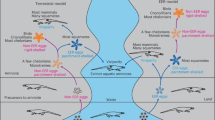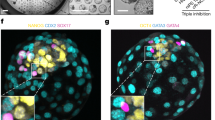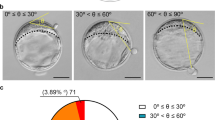Abstract
Rock and Hertig1 explicitly described their 7·5-day ovum (Mu—8020) as "implanted on" the endometrium; that is, this ovum has only just begun to embed itself and a large part of the ovum is still freely exposed in the uterine cavity. On the other hand, they referred to their older ova (including the 9·5-day ovum, Wi—8004) as "implanted within", "embedded in" the endometrium. In the limits of a short letter, I thus deliberately confined my comparison to "fully implanted" specimens, by which I mean specimens in which no part of the embryonic tissues is exposed freely to the uterine cavity. If completeness of endometrial epithelialization is to be the criterion determining whether an ovum is fully implanted or not, then my specimen is not so far advanced in this respect as the Wi—8004 ovum, in that no surface epithelialization has yet commenced in my specimen, but the embryonic tissues are separated from the uterine cavity by the maternal fibrinous elements of the operculum. This process of epithelialization evidently takes a considerable time, since it is not complete even in the 11·5- and 12·5-day Hertig-Rock ova2, by which time the "fully-implanted" ovum has undergone considerable advance in development beyond the stage shown in my specimen.
This is a preview of subscription content, access via your institution
Access options
Subscribe to this journal
Receive 51 print issues and online access
$199.00 per year
only $3.90 per issue
Buy this article
- Purchase on Springer Link
- Instant access to full article PDF
Prices may be subject to local taxes which are calculated during checkout
Similar content being viewed by others
References
Rock, J., and Hertig, A. T., Amer. J. Obstet. Gynecol., 44, 973 (1942).
Hertig, A. T., and Rock, J., Contrib. Embryol. Carnegie Inst. Wash., 29, No. 184, 127 (1941).
Heuser, C. H., and Streeter, G. L., Contrib. Embryol. Carnegie Inst. Wash., 29, No. 181, 15 (1941).
Author information
Authors and Affiliations
Rights and permissions
About this article
Cite this article
DAVIES, F. Early Human Embryos. Nature 153, 684–685 (1944). https://doi.org/10.1038/153684c0
Issue Date:
DOI: https://doi.org/10.1038/153684c0
Comments
By submitting a comment you agree to abide by our Terms and Community Guidelines. If you find something abusive or that does not comply with our terms or guidelines please flag it as inappropriate.



